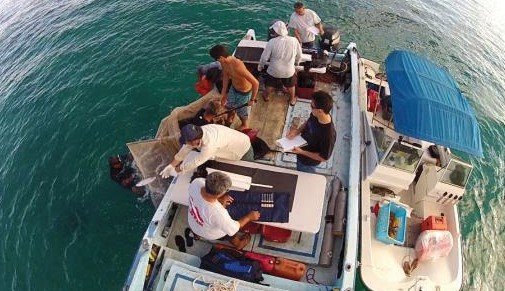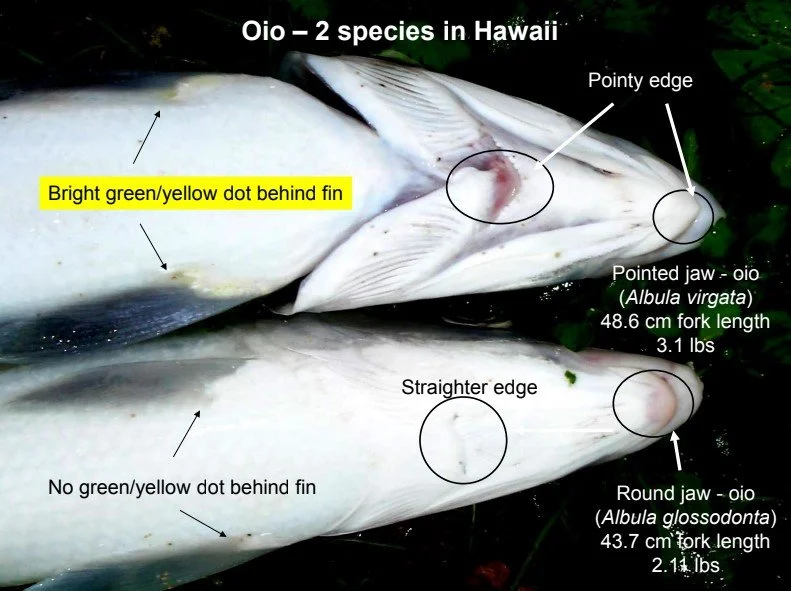PIFG Oio (Bonefish) Tagging Project
Offshore populations of oio were identified and captured for tagging through the use of a traditional Hawaiian commercial fishing method, known locally as the deep water bag net fishing. Bag net fishing is highly selective and effective for targeting schooling species and enables fish to be held alive and unharmed within the surround while allowing the unwanted fish to be released alive in the process. This project brought this fishing method and the proven high volume tagging methodology adopted from tuna tagging projects to create this first-of-a-kind high volume tag and release research project for oio.
Other oio tagging projects used opportunistic recreational rod and reel fishing to deploy and recover tags. Recreational anglers target oio on nearshore shallow water flats and shoreline areas which resulted in tagging of one of the two species of oio found in Hawaii. This provides an incomplete picture of the status of the oio stock around Oahu. This new bag net tagging method provides data on two species that provides a broader biological information of the oio stocks around Oahu.
Coordination and preparation of volunteers started with scouting for schools of oio via fixed wing aircraft. Fishing operations was coordinated in real-time with the volunteer tagging crew and the spotter plane. Once the fish was successfully “bagged” in the surround net, volunteer taggers and gear were deployed to the tagging site via small vessels. Once operations was set up, tagging and release of oio commensed. A total of 3,000 oio were tagged during the project. Five oio were tagged during a trial tagging trip on February 18, 2011 and subsequently, 2,995 oio were tagged during 4 volunteer tagging events on March 26, 2011, May 15, 2011, July 1 2012, and July 22, 2012.
Results
As of October 2016, there has been 86 oio tag recoveries reported. Short term tag recoveries (less than one year) indicate that the large nearshore schools of oio travel and freely intermix along the Waianae coast of Oahu, Hawaii. The species composition of the schools also showed that the schools can be species specific or mixed as well.
Longer term tag recoveries of over one year have shown travel beyond the Waianae area.
The longest distance traveled from Waianae was a tagged oio that was recaptured off of Iroquois Point, Pearl Harbor, travel of approximately 19 miles away. A couple oio were recovered off of Kalaeloa, Barbers Point. It is interesting to start seeing growth rates and movement from longer term recaptures of over one year. This can provide very important information on the local oio resource.
Some growth rate information was generated from the short term recaptures where time at liberty ranged from 2 days to 169 days. Growth rates ranged from zero to 2.8 inches of growth. Future oio tag recoveries will yield more information on seasonal and perhaps temporal growth rates.






